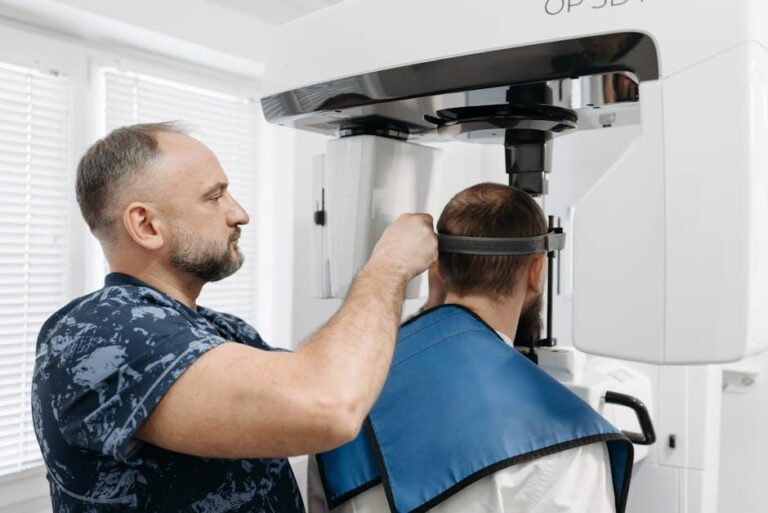
3D Scans & Future Dental Tech with Zelko Relic, Align Technology
In the evolving landscape of dental care, technology plays a crucial role in enhancing patient outcomes and streamlining clinical workflows. One pioneering figure at the forefront of this transformation is Zelko Relic from Align Technology. By leveraging cutting-edge 3D dental scans and innovative digital solutions, Align Technology is revolutionizing the way dentists diagnose, plan, and treat a wide range of dental conditions. In this article, we’ll explore how 3D scanning technology is reshaping dentistry and what the future holds for dental tech enthusiasts and professionals alike.
The Rise of 3D Scans in Dentistry
The integration of 3D scanning technology in dental practices marks a significant leap from traditional methods. Unlike conventional impressions that can be uncomfortable for patients and subject to error, 3D scans offer high precision, speed, and unparalleled patient comfort.
What Are 3D Dental Scans?
3D dental scans involve using intraoral scanners to capture detailed digital impressions of the teeth and oral cavity. These scanners use light and laser-based technology to create accurate three-dimensional models, which dentists use for diagnostics, treatment planning, and fabrication of appliances such as aligners and crowns.
Key Benefits of 3D Scans in Dentistry
- Accuracy: 3D scans reduce human error compared to physical molds and impressions.
- Patient Comfort: Eliminates the discomfort and gag reflex associated with traditional trays.
- Speed: Scans take just minutes and can be immediately reviewed on-screen.
- Digital Workflow Integration: Seamlessly connects with CAD/CAM technology and 3D printing.
- Better Diagnostics: Allows deeper visualization of oral structures beyond what X-rays can show.
Zelko Relic & Align Technology: Driving Innovation
Zelko Relic, a leading expert at Align Technology, has been instrumental in championing digital dentistry innovations that incorporate 3D scanning technology. Align Technology, best known for its Invisalign system, continues to expand its portfolio by merging software intelligence, hardware precision, and cloud connectivity.
Align Technology’s Contributions to Future Dental Tech
- Invisalign® System: Utilizes 3D scans for personalized clear aligners that gradually straighten teeth without traditional braces.
- iTero® Intraoral Scanners: Industry-leading scanners that provide dentists with quick, accurate 3D digital impressions.
- AI & Machine Learning: Accelerates treatment planning and outcome prediction through advanced data analytics.
The Future of Dental Technology: Trends & Innovations
Looking forward, the dental industry is set to benefit from a blend of innovations that build upon 3D scanning technology. Zelko Relic often highlights a few promising trends:
1. Artificial Intelligence Integration
AI-powered diagnostic tools help dentists identify potential problems earlier, improving preventive care. These tools analyze 3D scan data to predict erosion, decay, and periodontal issues with greater precision.
2. Personalized Treatment Plans
Digital workflows allow real-time customization of treatment methods, maximizing efficiency and patient satisfaction.
3. Enhanced Digital Impressions & Materials
Advancements in scanner accuracy and material sciences mean restorations and orthodontic devices better fit natural oral anatomy.
Practical Tips for Dental Professionals on Integrating 3D Scan Technology
- Invest in Training: Ensure your team is proficient in digital scanning and software use.
- Stay Updated: Follow the latest developments from leaders like Align Technology.
- Communicate Benefits to Patients: Highlight comfort, speed, and improved outcomes.
- Maintain Equipment: Regular calibration and software updates optimize scanner performance.
- Combine With Other Tech: Integrate 3D scans with CAD/CAM and 3D printing for complete digital workflows.
Case Study: Invisalign & 3D Scanning Success Story
| Aspect | Traditional Methods | 3D Scan & Invisalign Approach |
|---|---|---|
| Impression Process | Physical molds – uncomfortable and time-consuming. | Digital intraoral scanning – fast and patient-friendly. |
| Treatment Planning | Manual adjustments based on 2D X-rays. | Interactive 3D models with AI-enhanced prediction. |
| Appliance Fabrication | Lab-made, often requiring multiple adjustments. | Computer-designed aligners customized to scan data. |
| Patient Comfort | Frequent in-clinic visits and discomfort. | Less chair time, clear aligners, and remote monitoring. |
| Outcome Accuracy | Variable, dependent on clinician skill. | Consistent and predictable with digital precision. |
Personal Experience & Insights from Zelko Relic
Zelko Relic shares that one of the biggest game changers in modern dentistry is the ability to visualize treatments in real time with patients. “The 3D scans help foster better communication and trust, changing the patient experience completely,” he notes. Relic also emphasizes ongoing education and adaptation as key for professionals seeking to stay competitive in the digital era.
Conclusion
The future of dentistry is undeniably digital, with 3D scanning technology at its core. Thanks to pioneers like Zelko Relic and companies like Align Technology, dentists today can provide faster, more precise, and comfortable care through advanced tools and artificial intelligence. For dental professionals and patients alike, embracing 3D scans means stepping into a new era of innovation, efficiency, and improved oral health outcomes. Stay informed, stay equipped, and prepare for a bright, tech-driven future for dental care.


